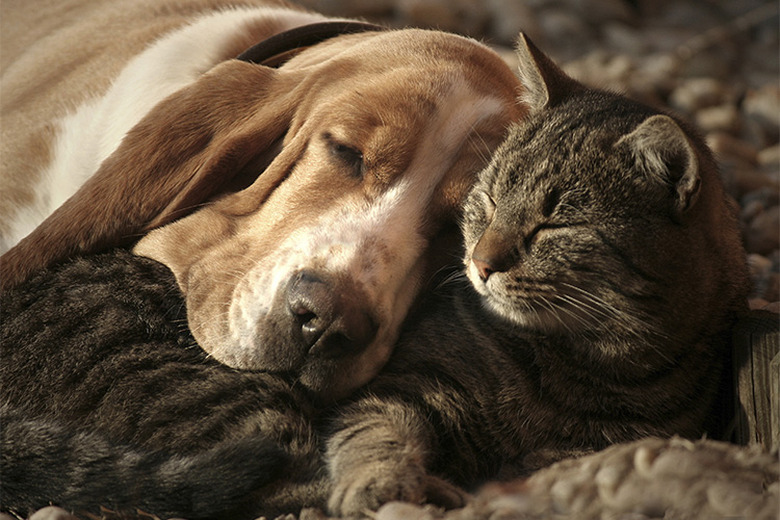Can Dogs Bond With Cats?
If you believe that cats and dogs mix about as well as oil and vinegar, you're a bit off with your thinking. In fact, given the right set of circumstances, you can learn how to get a cat and dog to bond nicely in your home. Cat and dog bonding may seem like a bad idea from the outset, but many pet lovers can't choose between pet types and want to own both. In order to get your animal family members to live in harmony, you'll need to figure out how to get a dog and cat to bond. Your best bet is to work slowly using patience and tasty rewards to train each animal as you encourage bonding.
Cat and dog bonding by breed
Cat and dog bonding by breed
When you're thinking about how to get a cat and dog to bond, it's wise to consider the type of canine you own or might adopt down the road. While not every dog in a particular breed will display the same behavioral traits, if you can skew toward certain types of pups, you may have more success with your cat and dog bonding.
For example, some dogs have a personality that is similar to that of a cat, including the affenpinscher, who is known to hunt mice and Chihuahuas and who can be trained to use a litter box. A nonsporting canine, like the amiable bulldog, is another good match since this pick is a friend by nature rather than a hunting partner.
Create separate spaces
Create separate spaces
As you learn how to make a cat bond with a dog at your house, assess the room you have and then work to set up individual areas for each of your animals. Both pets need their own spot to eat, drink, and hide, whether it's a dog crate for your puppy or a quiet section of the laundry room with a scratching post and litter box for your kitty. When your cat and dog do start meeting face to face, it's smart to host these meetings in a room with a few elevated spots to which your cat can leap in case she feels threatened, such as the back of the couch or a high shelf.
Go slow and be brief
Go slow and be brief
Cat and dog bonding needs to occur in a measured, careful way. This means instead of putting your two very different pets together right away, take several days for the two to simply become aware of the other one in the house. Your cat and dog can smell and hear each other, and this is enough contact in the beginning. Next, offer their meals on two sides of a closed door, which again allows them to sense the other without making eye contact. Finally, when you're ready to introduce them, do so in a neutral spot (not in either pet's quiet areas) and keep the meetings brief.
Offer rewards and practice often
Offer rewards and practice often
It's a good idea to keep your pup on a leash and allow your cat to wander around freely. Don't force them together; instead, let them sniff and explore in a natural way. Treats are always good to have on hand for both animals, as are fun toys to occupy them while they get to know one another. When you offer a high-value snack to either animal, you're teaching him to associate the other creature with something delicious.
Continue these meet-and-greet sessions every day, stopping just short of any aggression or acting out by your pets. If they seem comfortable after several days, let them loose in the common room but keep your dog tethered so you can grab the leash if he starts to chase or annoy the cat.
